By J.D. Arden, Reference Services Librarian, Genealogy Specialist, Center for Jewish History
Here at the
Center for Jewish History in the Ackman and Ziff Family
Genealogy Institute, researchers in genealogy often
discover or bring in old postcards, letters, manuscripts or vital statistics
records. These old documents are notoriously difficult to read! Some are in
Yiddish, some in Hebrew. Here are my tips for deciphering Hebrew-alphabet
penmanship and my suggestions of tricky handwriting patterns to watch out for.
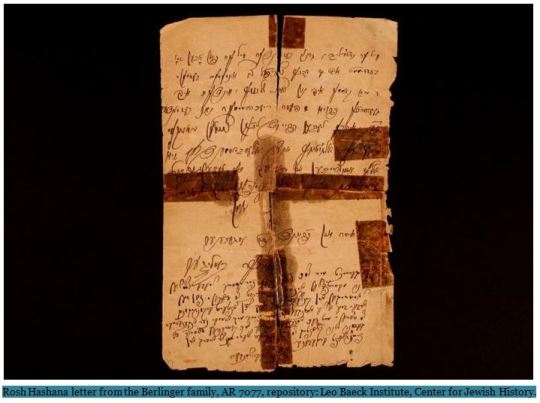
Tip 1. Don’t just struggle on the word or name you need to decipher. Look at the entire writing sample for context and orthography patterns.
If you find another recognizable word, use that to build a key of how the
author writes certain letters.
There are many different ways to write an alef – א,
the first letter of the Hebrew alphabet, for instance. Here are a
few:

Tip 2. Trace the writing yourself with your finger, reading aloud. A
difficult word may become clearer from the context of the document and through
the action of re-tracing a jumble of letters.
Unlike
in Modern Israeli Hebrew, handwriting in
Diaspora or antiquated Hebrew, Yiddish (or other
Diaspora Jewish languages in the Hebrew alphabet) often uses fanciful ligatures
and final flourishes. Intermediary
letters, especially yud and double yud, can be absorbed into one or two
wavy lines, see some examples in Yiddish below:
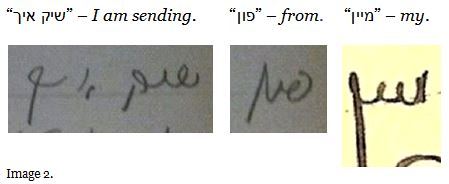
The vertical lines of vav, alef, and yud can become
almost indistinguishable, here in Yiddish “וואס שרייבסט דאס” – which you write that.

Here a flourished hooked daled ends the word
“בילד” – photo and a
final resh is often reduced to a horizontal flourish, as in the sample “דיר”
– [to] you.
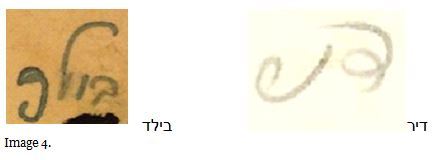
This phenomenon of a how a print standard of writing evolved into
certain patterns of cursive script can be observed in the many connections between
the Hebrew alphabet and the modern Arabic alphabet, which now functions as a
cursive script but is still related to earlier writing systems.
Here,
in the name (or adjective) “פרומע” – Fruma (pious), and
the word “קינדער” – children.

Tip 3. Take into account that, before the modern convenience of ballpoint
pens, pen and ink was messy! Letters might be smudged. And before the era of
spell check, spelling might vary widely depending on regional dialect or the literacy
of the author. Here are some common issues related to the nature of ink on
paper and to non-standardized spelling.
The letter mem is often reduced to what appears as one thick mark,
here
“מיט",
“מיר” and “מיין” with, me and my.
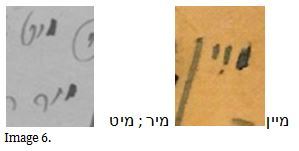
In contrast, a double vav with a
connecting diagonal can often look like a version of a standard handwritten mem.
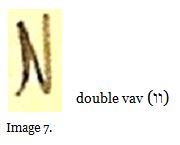
Like in Modern Israeli Hebrew, the relative size of the similar letters
yud, vav, and final nun (י.ו.ן) can vary from sample to sample.
The most common phrase accompanying a postcard or photograph
is “in [the] memory of…” – צום אנדענק פון. Here are several samples to compare: in some dialects of
Yiddish, ע becomes יי and, פון becomes פין.
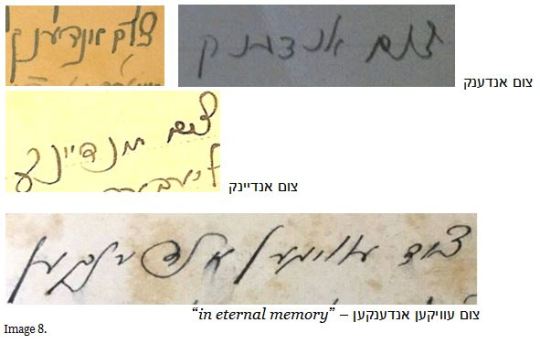
Tip 4. Remember to think in historical context. Conventions of another era
and country may be unusual at first – like how to read a date.
Dates in old letters and postcards can often in the format
of: day in Arabic numerals / month in Roman numerals | the abbreviated decade
of the year in Arabic numerals; see below:

Sometimes letter-writers whose non-Jewish majority language
education or experience was in Polish, Russian, or another European language,
will habitually follow the convention of adding the abbreviation “year”: r (rok),
г (год or година), etc. to the end of the date in Arabic numerals – even if the
text of the letter is otherwise completely in Yiddish or Hebrew. Sometimes an
author might mix the Hebrew word “year” – שנ with Arabic numerals.
It is worth noting that Jewish dates, years, enumeration,
lists of 1-2-3, all can be expressed only through letters of the alphabet –
each Hebrew letter having a numerical value. In the context of Jewish-language
manuscripts or printing, there is no necessity for the use of a numeral system,
Roman or Arabic. The Hebrew alphabet as numerical equivalents is most often
encountered in genealogy research of tombstones, marriage ketubbot, and in
personal correspondence. Letters used as a numerical equivalent are marked with
a geresh – a slanted apostrophe-like sign used in the Hebrew alphabet as
a diacritical or punctuation mark. Often in a religious or antiquated writing
context, the geresh equivalent that is used is the more scriptural
symbol tsinnorit – similar to a sideways S and often simplified as a
horizontal line. Numerical equivalents and all Hebrew abbreviations are marked
with a geresh (or gershayim, plural).
Below is an example of a Hebrew date sequence with numerical
equivalents represented by letters marked with a geresh:

Here, a conventional religious abbreviation and a weekday
indicator are both marked with the tsinnorit above the letter instead of
a geresh:

And lastly, Tip 5. Take a break and ask a friend to
take a look. Sometimes a deep breath and a fresh pair of eyes will help crack
the case!
For
further exploration of other styles of handwritten Jewish Diaspora languages
among many communities and some specific to the Sephardi and Mizrachi Diaspora,
check out this link to a University of Washington Jewish Studies video – Learn
How to Write Soletreo (the Ladino Alphabet) with David Bunis.
The library and archive online catalog
of CJH can be searched in Roman or Hebrew script, and our catalog results page
can be refined to material in many languages, including Jewish Diaspora
languages such as Yiddish, Ladino, Judeo-Arabic, Classical Syriac,
Judeo-Persian, and Samaritan Aramaic. Information pertaining to many other
Jewish Diaspora languages (Judeo-Tat, Judeo-Provencal, Haketia, and others) can
also be found within our collections.
For more information about our vital statistics microfilm
collection, our Genealogy Institute Membership Program,
workshops and research guides, please visit www.genealogy.cjh.org
Note:
all numbered images are excerpts, used for the sole purpose of this educational
article, from the public social media pages Facebook Genealogy Translations and
Facebook Tracing the Tribe.

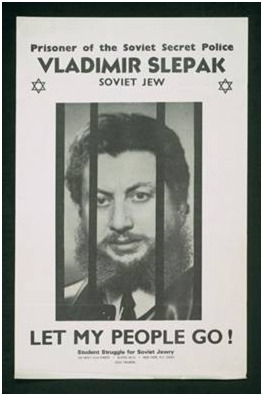


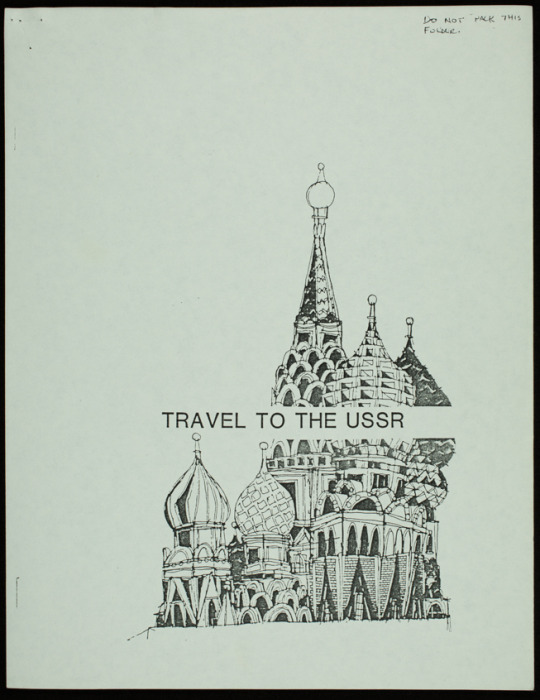
Thank you so much for this wonderful essay. I’m going to try to send you a postcard from Tashkent written by family trying to escape the Nazi’s. Though I read a little Yiddish, I do not know what the other language is transliterated here in Yiddish characters.
This is superb. We could really have lived without the Ben Yehuda Hebrew transliterations (“b’ezraT”, etc.) — it’s really very offensive, as though there’s something shameful about the older pronunciations, the ones our parents, grandparents, and ancestors used — and the origin of this tendency does not come from a good place AT ALL — but the technical element is beautifully done and of great practical use. Thank you for that.